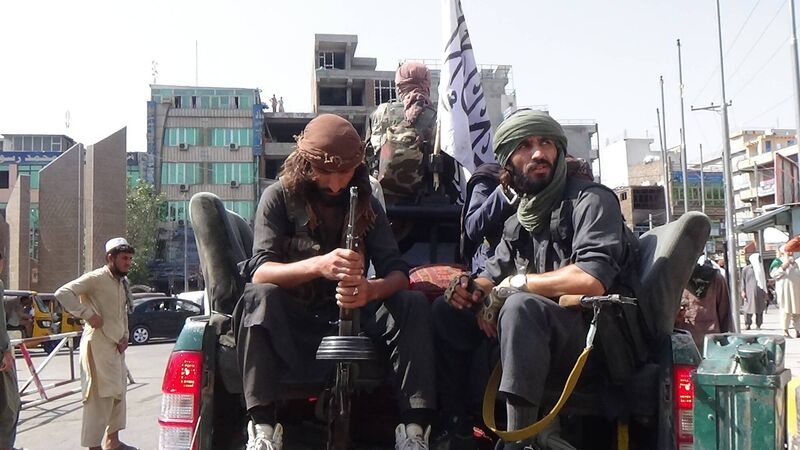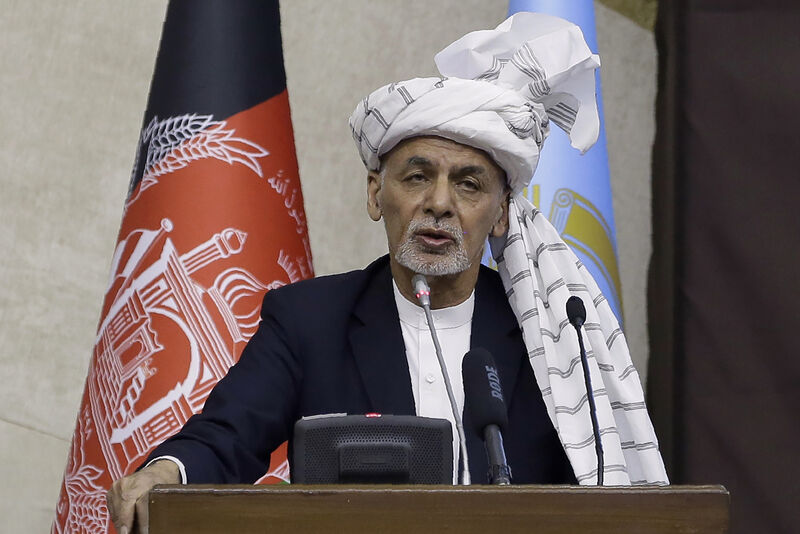Afghanistan collapsed because corruption had hollowed out the state

Taliban members patrol the streets of Jalalabad city in Afghanistan on August 17 as the Taliban took control of the country after president Ashraf Ghani fled the country. Picture: Getty Images
When the Taliban swept into Afghanistan’s capital, Kabul, the militant group faced almost no resistance.
The country’s now former president, Ashraf Ghani, fled to the United Arab Emirates, accused by one of his own ambassadors of stealing $169m (€143m) on his way out — and the Afghan military melted away without a fight.
US president Joe Biden blamed the Afghan people for the Taliban’s conquest. “We gave them every chance,” he said. “We couldn’t provide them the will to fight for their future.”
But blaming Afghan citizens, some of whom may be tortured or killed in the near future, for their country’s collapse is wrong and immoral.
The Taliban victory is the product of the corruption and cronyism of elites — especially senior US military personnel and Afghan politicians.
Corruption in Afghanistan has long been an open secret among international observers and its own citizens.
In 2020, Transparency International ranked Afghanistan among the top 20 most corrupt countries in the world.
If the Afghan people — and its military — refused to fight for the state, it was, in part, because they had no faith in it.
One reason the Afghan military collapsed so quickly was because, in part, it did not actually exist.
In July, Joe Biden claimed that the Afghan army had 300,000 troops, but the Pentagon knew those numbers were inflated.
Afghan military commanders had been pocketing extra money allocated for fake soldiers.
“The number of ghost personnel may go into the tens of thousands,” said John Sopko, the special inspector general for Afghan reconstruction, in a 2017 speech.
A West Point report, released in January, estimated the Afghan government had a real fighting force of only 96,000. And by the time Kabul fell, these soldiers were reportedly no longer receiving a salary, or even food.
A 2009 report in cited US military officials who estimated that between 10% and 20% of the money from Pentagon logistics contracts in Afghanistan — hundreds of millions of dollars — went to the Taliban.
“Afghanistan’s intelligence service, the National Directorate of Security, had alerted the American military to the problem,” reported .
But 10 years later, the payments were allegedly still happening.
In 2019, a group of families who had lost loved ones to the Taliban sued a different set of military contractors for allegedly paying off the Taliban. (The case is ongoing.)
Another stream of Taliban financing, facilitated by the Pentagon and Afghan elites, was the exploitation of Afghanistan’s mineral wealth.
In April, I co-authored an investigation for the Organized Crime and Corruption Reporting Project (OCCRP) that implicated the Afghan president and his family in mining corruption, along with well-connected US military contractors.
An estimated $1tn (€848bn) worth of minerals lies buried under the country’s surface. Before the Taliban takeover, Afghan law prohibited companies from buying minerals from small unregistered mines.
Buying from these mines meant financing the enemy. But our reporting found that there was one company that managed to get an exception to this rule, apparently with the approval of the office of president Ghani.
His office signed off on extralegal rights for the Afghan subsidiary of a US military contractor, SOS International (SOSi), to acquire chromite, a valuable component in stainless steel, from unlicensed mines in six Afghan provinces. The company built a factory outside Kabul and planned to crush and export the chromite.

SOSi is deeply tied to the American military and intelligence services. The company recruited heavily from the office of the former CIA director and top American commander in Afghanistan, general David Petraeus, securing significant political heft in the process.
“It’s an open secret that SOSi is essentially a front for the [US Department of Defense],” one high-ranking Afghan official told us.
But SOSi had an even more important connection. Our OCCRP investigation revealed that the president’s brother, Hashmat Ghani, owned 20% of SOSi’s subsidiary, according to confidential documents leaked from an Emirati secrecy haven.
Beyond any mineral money flowing to the Taliban, this deal reflects the broader reasons Afghanistan collapsed.
Corruption hollowed out state institutions and left Afghan citizens unwilling to fight for a government that, just like the Taliban, abused its own people, although in this case through theft, extortion, and nepotism rather than outright violence and repression.
The Afghan state and army was in large part a facade, held up only by the American occupation, and it’s no surprise that Afghans were unwilling to fight and die for it any longer.
But its failure isn’t on them. Afghanistan fell because after looting all they could from the country, American and Afghan elites gave up and fled, leaving the Afghan people behind. Who would fight for a broken system?
- Zack Kopplin is an investigator at the Government Accountability Project
- Guardian Service














